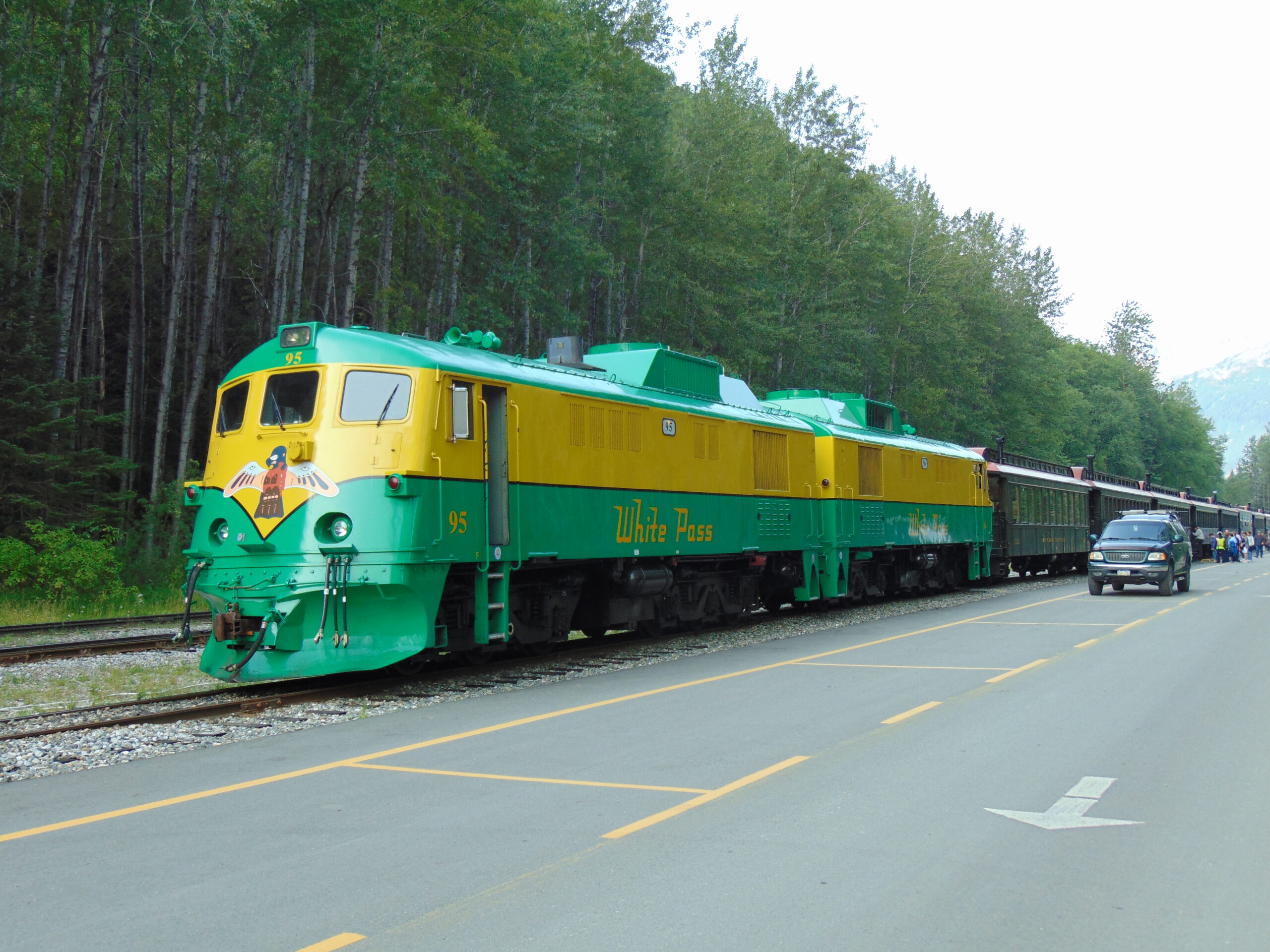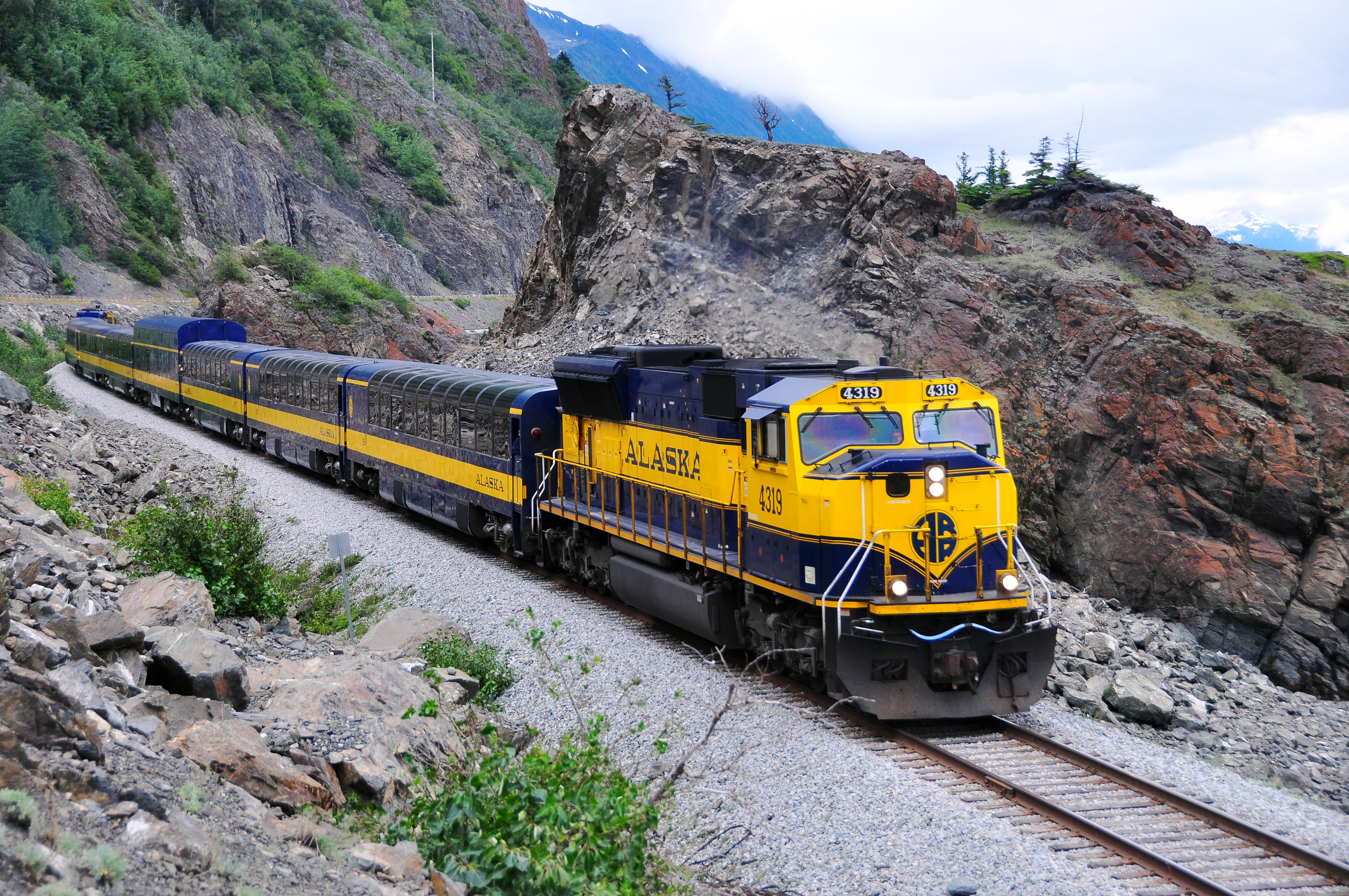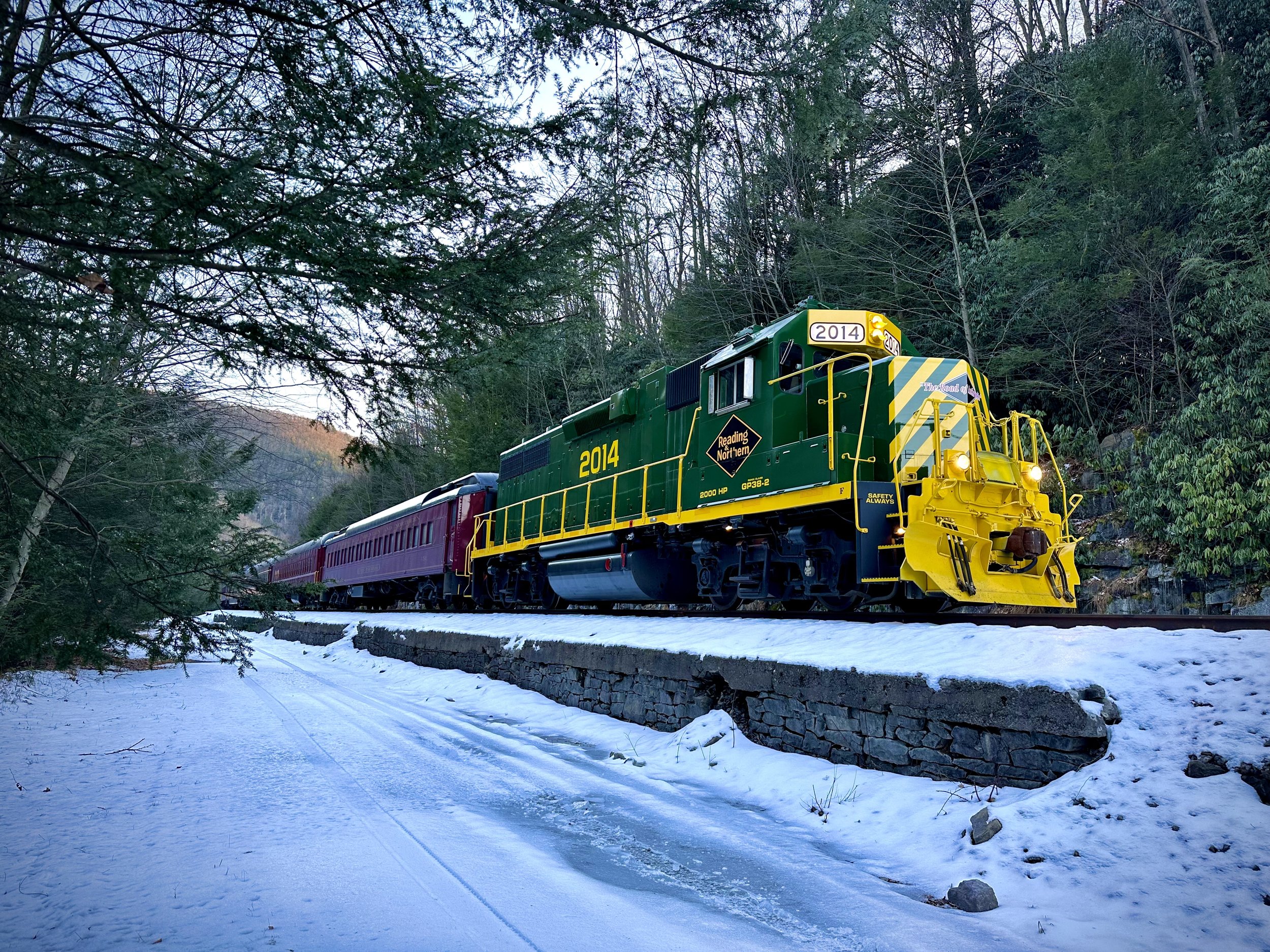Table of Contents
Quick Facts
| Year Founded | 1898 |
| Total Track Mileage | 67.5 Miles |
| Total Locomotives | 28 Diesels |
| Number of Employees | 84 |
| Number of States Located In | 1 US State, Alaska, British Columbia, and Yukon Territory, Canada |
| Headquarters | Skagway AK |
| Websites | https://wpyr.com/ |
History of the White Pass & Yukon Route
The White Pass & Yukon Route is one of the most scenic trains in North America. Riding the line is one of the “must do” items on any railfans list of attractions. It traverses through very scenic terrain as it heads north out of Skagway, toward the Canadian border, Carcrosse, and White Horse (if the line is open). Depending upon the trip you book, you could have several options to choose from as a passenger.
Of course it’s a narrow gauge railroad that is operated like a class 1 passenger railroad. This is one the author’s favorite, and quite possibly the BEST, railroad trip ever taken.
History:
The White Pass & Yukon Route Railroad is a legendary railway that spans the stunning landscapes of Alaska and Canada. With a rich history dating back to the late 19th century, this railroad has played a crucial role in the development of the region. From its construction and early years to its transition into a renowned tourist attraction, let’s delve into the captivating story of the White Pass & Yukon Route Railroad.
Construction and Early Years:
In 1898, during the Klondike Gold Rush, the White Pass & Yukon Route Railroad was built to connect the port of Skagway, Alaska, to the goldfields of the Yukon. This feat of engineering required overcoming treacherous mountainous terrain, deep canyons, and harsh weather conditions. Completed in just two years, the railroad became an essential transportation link for miners and goods, providing a safer and faster alternative to the treacherous Chilkoot Trail.
Hauling Cargo through History:
During its early years, the White Pass & Yukon Route Railroad hauled a variety of cargo, including vital supplies for gold miners, lumber, and ore from the mines. As the gold rush waned, the railroad continued to support the region’s economic growth by transporting goods, including agricultural products, fish, and timber. It played a pivotal role in connecting isolated communities, ensuring their survival and development.
Transition to a Tourist Railroad:
With the decline of freight traffic, the White Pass & Yukon Route Railroad transformed into a popular tourist attraction in the mid-20th century. Recognizing the natural beauty of the route, the railroad shifted its focus to providing scenic journeys through awe-inspiring landscapes. Today, tourists from around the world flock to experience the nostalgic charm and stunning vistas of this historic railway.
Ownership and International Connection:
Ownership of the White Pass & Yukon Route Railroad has changed hands over the years. In 1982, it was purchased by a subsidiary of the Alaska government, the Alaska Railroad Corporation. The railway operates within both the United States (Alaska) and Canada (Yukon), requiring cooperation between the two countries. This cross-border connection enhances cultural exchange and tourism opportunities while strengthening economic ties.
Passenger Experience Today:
Passengers aboard the White Pass & Yukon Route Railroad can immerse themselves in a captivating journey through picturesque landscapes. They traverse towering mountain ranges, cross breathtaking trestle bridges, and witness the remnants of gold rush history. The railroad offers various tour options, including full-day excursions and shorter trips, catering to diverse interests and time constraints.
Historic Steam Locomotives:
Adding to the charm and authenticity of the railroad, the White Pass & Yukon Route boasts a fleet of historic steam locomotives. These magnificent machines, lovingly restored, harken back to the golden era of rail travel. Passengers can experience the thrill of riding behind these iconic engines, reliving the past and gaining a deeper appreciation for the pioneers who forged this rail route.
Iconic Passenger Cars:
The White Pass & Yukon Route Railroad also features historic passenger cars, meticulously preserved to reflect the elegance and grandeur of a bygone era. These vintage coaches, adorned with ornate detailing, transport passengers in comfort and style. They offer panoramic views of the stunning scenery, ensuring an unforgettable journey for those aboard.
Conclusion:
The White Pass & Yukon Route Railroad stands as a testament to human perseverance and ingenuity, spanning the borders of Alaska and Canada. From its humble beginnings as a lifeline for gold miners to its present-day incarnation as a premier tourist attraction, this railroad carries the legacy of an extraordinary era. By combining breathtaking landscapes, historic
Surviving Steam Locomotives
| Locomotive | Type | Builder | Status | Location |
| 61 | 2-8-0 | Baldwin 1900 | Restoration | Antonito, CO |
| 4 | 2-6-2 | Baldwin 1912 | Out of service | Como, CO |
| 19 | 2-8-2 | Alco 1920 | Operational | McEwen, OR |
| 20 | 2-8-2 | Alco 1920 | display | McEwen, OR |
| 70 | 2-8-2 | Baldwin 1938 | Operational | Pigeon Forge, TN |
| 71 | 2-8-2 | Baldwin 1939 | Stored | Pigeon Forge, TN |
| 72 | 2-8-2 | Baldwin 1947 | Stored | Pigeon Forge, TN |
| 192 | 2-8-2 | Baldwin 1943 | Operational | Pigeon Forge, TN |
| 60 | 4-6-0 | Baldwin 1900 | Stored | Skagway, AK |
| 195 | 2-8-2 | Baldwin 1943 | Display | Skagway, AK |
| 52 | 2-6-0 | Brooks 1881 | Display | Skagway, AK |
| 69 | 2-8-0 | Baldwin 1908 | Out of Service | Skagway, AK |
| 73 | 2-8-2 | Baldwin 1947 | Operational | Skagway, AK |
In addition to these locomotives listed there are several that were buried in the Skagway river.
Getting There
The most common way to get to Skagway is via a cruise ship.
There is no Amtrak station, or VIA rail station nearby
If you can experience a cruise as part of the trip it would be well worth is as well.

The next best option is to fly to Skagway into their airport. Driving is possible. However the trip from Seattle Washington to Skagway is calculated to take over 30 hours.






















